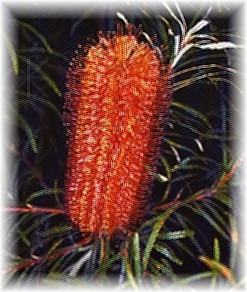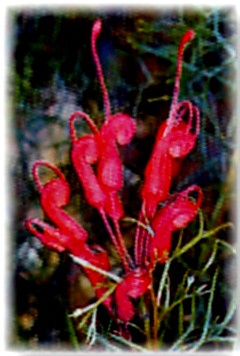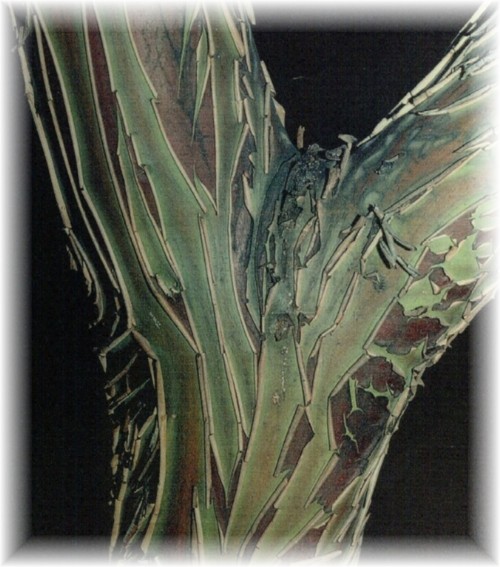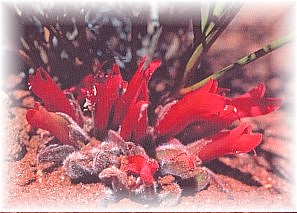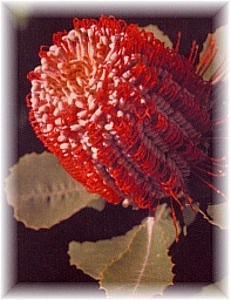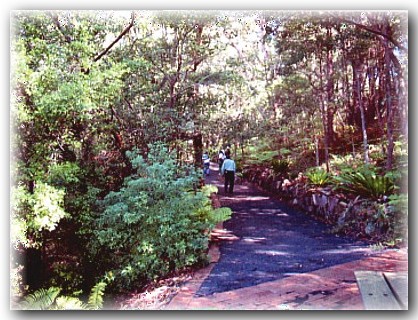Themeda
triandra
Kangaroo Grass
Synonym T. australis
Ros Cornish , Member of the Friends
Themeda : from Arabic
triandra : Greek - treis three, aner man
australis : southernOne of the first plants people see when driving into the Gardens is Themeda triandra, the tall, nodding grass in the central grassland section (Section 175) between the car parks. It is one of the most widespread species of grass in Australia, occurring in all States from the coast to the arid inland. It also occurs in New Guinea. It once dominated the inland grasslands in south-eastern Australia but it is susceptible to heavy grazing and is out-competed by exotic pasture grasses when fertiliser is used.
|
|
T. triandra is a very useful grass because it is palatable to stock, grows mainly in summer and so is green when many other grasses have browned off. It is also drought-resistant and deep-rooted and is a major fodder grass for kangaroos, hence its common name. It became well known by the early settlers with reports of its growth being so vigorous that the stems "could be tied over the horses' saddles". According to Nancy T. Burbidge in Australian Grasses (revised edition, 1984) "this claim is more likely to have been based on enthusiasm, poetic licence, or short horses, than on strict truth."
It is a tufted perennial growing to about one metre high when flowering and usually has bluish-green new growth with some purple and red tones, brownish at maturity. The leaves occur at the base and have a blade to about 30cm long and 5 mm wide and are keeled near the base. The flowerheads have compound clusters of spikelets enclosed by spathes. The spikelets can be bisexual, male or sterile. The fertile flowers in the spikelets have a fine twisted awn about 5 cm long. When ripe, the fertile spikelets separate from the hard outer glumes to form a sharp-pointed barb tipped with stiff hairs. This helps with dispersal on the bodies of animals (or on clothing) and also with the penetration of hard ground.
T. triandra is becoming a popular feature plant and looks especially good in a grassland garden or in a rockery. It is a good plant to try in our erratic climate. Take a close look next time you are near Section 175 (and other places in the Gardens, eg Section 240) and keep watching it through the seasons.
Themeda is a genus of 18 species mainly from the Old World Tropics; there are 5 species in Australia, 3 of these native.


